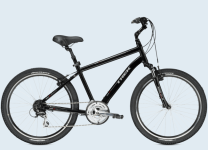Hi Richard,
I do not suggest you run 72V, 50V is plenty. Our 9 fet 30A controller, which is a mid-power controller, on 50V will deliver ~1500W input power, and that is at least 1000W plus output power from the motor.72V and 30A is 2160W input power.
A 10T on 50V with 9 or 12 fet controller will top out at about 25mph and have good hill climbing. You don’t want an overly high speed setup if you will be hitting lots of hills. 72V on a 10T is pretty fast and not what I would recommend for pulling some weight up steep hills.
A torque arm and freewheel is a good idea on a rear kit.
The Mac motor uses a screw on freewheel, it cannot use a cassette. The 11T DNP are popular as it allows you to pedal to a higher speed. The Mac can accept a 7 speed without any additional spacers (135mm axle width). If 8, 9 or 10 speed are used, a spacer of ~4mm is required and the axle width will increase to ~139mm. Difference between a Freewheel and a Cassette:
http://sheldonbrown.com/free-k7.html
Drawings for 7, 8 and 9 speed DNP:
http://1drv.ms/QTqx1K
7sp DNP 11T Freewheel
http://em3ev.com/store/index.php?route=product/product&path=41&product_id=63
8sp DNP 11T Freewheel
9sp DNP 11T Freewheel
10sp DNP 11T Freewheel
DNP Extractor Tool
Grin Tech Rev2 Front Torque Arm (forks with eyelets)
Grin Tech Rev3 Front Torque Arm
Grin Tech C-washers
Grin Tech Rev4 Rear Torque Arm
http://em3ev.com/store/index.php?route=product/product&path=41&product_id=88
Torque Arm Info (manufacturers website)
http://www.ebikes.ca/torque_arms/
We have an automated checkout on the site. If you select the items you are interested in, checkout as a guest (or register of course), then enter you address, you will be given a list of shipping options. Batteries should be shipped using an option with “Battery” in the description, non-battery parts you can select any option (but some options are not suitable for bulky/over-sized items). You can then checkout with Request a Quote if you are unsure about anything, want to use Wire Transfer or want to discuss an order. Checkout with PayPal if you are ready to Proceed. We can always modify an order if requested and will generally look over every order, and look for any possible errors. If just looking, no need to press “confirm” at the end of the checkout process.
Courier Shipment (DHL or Battery-Fedex) have a price break on 20kg plus shipments. The sub 20kg price per kg can be as much as double the 20kg plus price per kg. The first 0.5kg or 1kg of almost every shipping option are charged at a higher rate (does not apply to 20kg plus shipments, which are a fixed price per kg). It may or may not be cheaper to split an order into Battery and Non-Battery Parts. Battery shipments are more expensive than non-battery shipments. Typically if total weight with kit and battery is less than 12kg, it may be a little cheaper to split the shipment. If weight is closer to 20kg, it will generally be cheaper to combine and get the cheaper shipping cost for 20kg plus shipments. All scenarios can be checked using the online checkout. Note that some less popular destinations may not have all shipping options listed (but they may be available), so it would be best to checkout with request a quote.
Thanks
Paul


